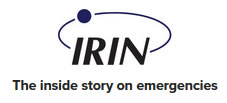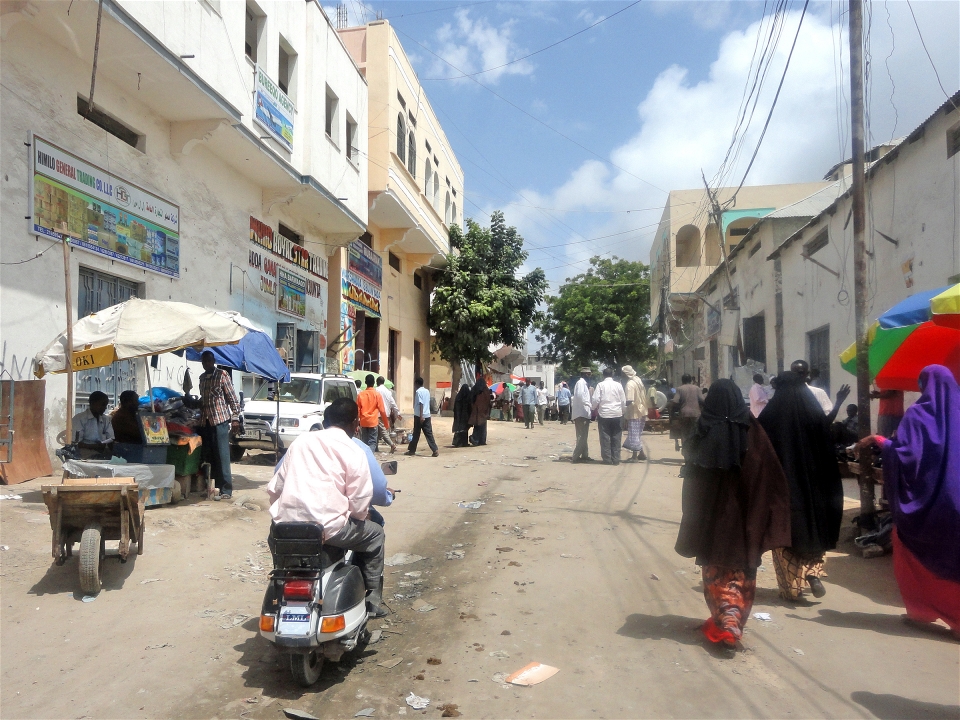
Wednesday, November 07, 2012

The Southern entrance of Bakara Market in Mogadishu
© Mohamed Amin Jibril/IRIN
Below, IRIN highlights some of Somalia’s key health and socio-economic indicators, obtained from local experts and other sources, that will influence the country’s progress as it seeks to leave conflict behind.
Health infrastructure: Somalia faces numerous health challenges, central among them the absence of an effective national health system, according to former acting health minister Abdiaziz Sheikh Yusuf. After the 1991 overthrow of the former government, hundreds of doctors and nurses fled the country, and medical services were taken over by the private sector, the UN and NGOs. Under a new cabinet structure announced on 4 November, the health ministry will now fall under the Social Development Services Ministry, which will be led by Maryan Qasim. This new ministry will also cover education, youth and sports.
Malnutrition: At least 28 percent of Somalia’s population - some 2.12 million people - are currently food insecure, a drop from the peak of over 4 million people in 2011. An estimated 236,000 people are acutely malnourished and in need of specialized nutrition treatment, according to a 26 September Food Security and Nutrition Analysis Unit report.
While exact figures on national undernutrition prevalence are not available from the government, poor nutrition is recognized as a major problem. Lul Mohamud Mohamed, a Mogadishu-based paediatrician, told IRIN that malnutrition there is worsened by diseases such as measles.
Child mortality: Somalia ranks first in the world in under-five mortality, according to the UN Children’s Fund’s (UNICEF) 2012 State of the World’s Children report. Children face poor healthcare coverage and quality, low immunization rates, high levels of malnutrition and frequent disease outbreaks.
Potable water: Only 30 percent of Somalia’s population has access to improved drinking water sources and only 23 percent has access to improved sanitation facilities, according to UNICEF’s report. While the government does not know the exact number of Somalis without access to clean drinking water, Yusuf, the former acting health minister, told IRIN that there are insufficient water wells in the country, describing this as one of the most important challenges facing the new government.
Refugees and internally displaced persons (IDPs): Somalia continues to be the leading refugee source country in the Horn of Africa, mainly due to its insecurity. As of 31 October, over 1 million people had fled Somalia to neighbouring countries; about half of them are being hosted in Kenya, mainly in the eastern Dadaab camps. The rest of the refugees are spread out in countries such as Yemen, Ethiopia and Uganda, according to the UN’s Refugee Agency (UNHCR). An estimated 1.36 million Somalis are internally displaced, mainly in the south-central regions. According to UNICEF, an estimated 27 percent of Somalia’s population (or about 2 million people), half of whom are children, remain in a state of humanitarian crisis.
Press freedom: The Committee to Protect Journalists has labelled Somalia one of the most dangerous places in the world to be a journalist. Eighteen journalists having been killed there this year alone, and 20 others have been wounded in attacks, according to the National Union of Somali Journalists. The killings have been blamed on Al-Shabab militants, who still control many rural parts of south-central Somalia, although the insurgent group has yet to claim responsibility for the killings.
Women and politics: The constitution mandates women comprise 30 percent of Somalia’s parliament, but that number currently stands at only 15 percent. In the recently unveiled new cabinet, two of the 10 ministers announced were women: Qasim will be the new Social Development Services Minister, and Fauzia Yusuf Haji Aden will head the high-profile foreign ministry. The nominations have yet to be ratified by Somalia’s parliament.
Agriculture: Somalia has a land area of about 637,657sqkm, of which 70 percent is considered ‘agricultural land’, or land suitable for farming and pasture, according to World Bank data. But only 1.6 percent of the total land area is arable, according to Hussein Haji, an agricultural expert and the executive director of the Somali Agricultural Technical Group. And only 10 percent of arable land is currently being cultivated, with farmers in the sorghum- and maize-growing Bay and Bakool regions depending on rain-fed agriculture.
Haji estimates that agriculture contributes about 40 percent of Somalia’s Gross National Product; tomatoes, onions and sesame are some of Somalia’s cash crops, and cereal yields include wheat, rice, maize, barley, oats, rye, millet, sorghum, buckwheat and mixed grains harvested for dry grain only. But production is very low because farmers lack access to quality inputs and irrigation, Haji said. For example, from 2007-2011, the cereal yield in Somalia was 432kg per hectare of harvested land, compared to Austria’s 5,358kg and Ethiopia’s 1,674kg, according to World Bank data.
Livestock: Somalia has about 60 million heads of livestock, according to estimates from the Ministry of Agriculture and Animal Husbandry. Somalia exports livestock, mainly goats, to the Arabian Peninsula, and the meat is also locally consumed. Raising livestock is the main economic activity in most central regions, as well as in the self-declared autonomous region of Puntland, in northeastern Somalia, and in the self-declared republic of Somaliland.
Fishing and tourism: Somalia has about 3,300km of coastline, which, if well utilized, could help improve the country’s economy. If Somali fishermen could access the right training and equipment, the country could feed itself, Mohamed Sheikh Ahmed, an economist and lecturer at the Mogadishu-based SIMAD University, told IRIN. Ahmed also noted the coastline could also be used to develop a tourism sector, as the country enjoys pristine beaches. “In some parts of the country, you can see forests almost mingling with the sea while camels graze nearby. This is beautiful and can be a tourist attraction, if utilized,” he said. Rampant insecurity, however, remains a major challenge.
Youth: The country has a significant youth population, with about 42 percent of Somalis being aged 14 to 29. But the youth are mainly idle; unemployment among them stands at a high of 67 percent - one of the highest such rates in the world, according to the 2012 UN Development Programme’s Somalia Human Development Report. Youth must be given opportunities, “as their exclusion, resentment and grievances are fuel for conflict escalation and risky behaviours,” the report says.
amd/aw/rz